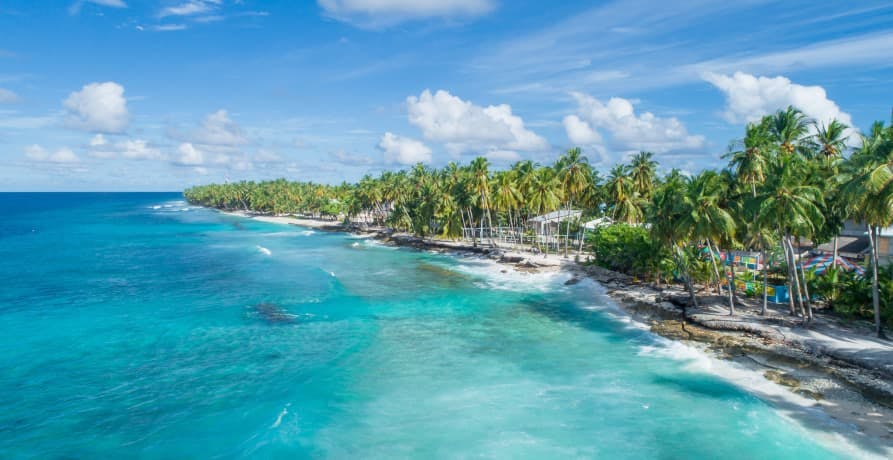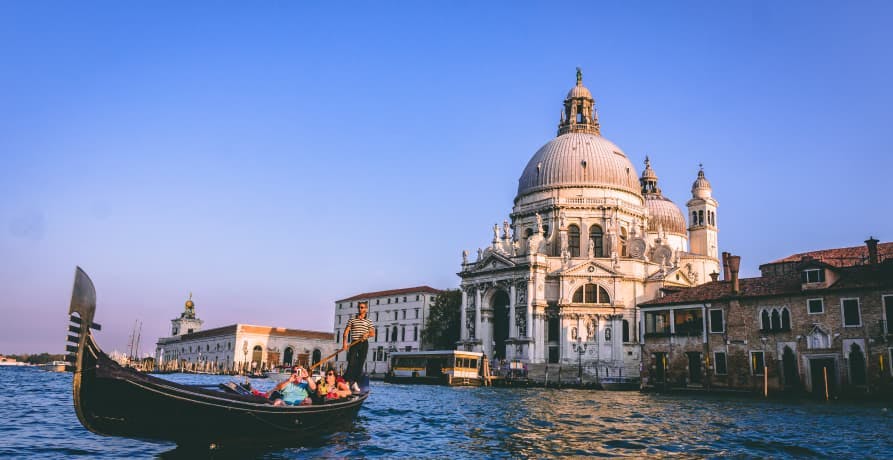ESG / CSR
Industries
What is last chance tourism?



But this kind of travel comes with a catch: the very act of visiting these fragile places often speeds up the damage. It's a paradox that raises tough questions about sustainability, ethics, and the future of tourism.
- What last chance tourism really means – and why it’s on the rise
- The environmental and economic impacts of this kind of travel
- The paradox of tourism funding conservation while accelerating damage
- How travellers, businesses, and governments can make tourism more sustainable
What is last chance tourism? A quick overview
From coral reefs to glaciers, many iconic natural and cultural sites are increasingly flagged as vulnerable. This urgency is often amplified by news coverage, climate reports, and rising public awareness of what’s at stake.
The result? A surge in visitors to fragile destinations that are often the least equipped to handle it. It’s a powerful paradox - one where the act of visiting may contribute to the very decline travellers are hoping to witness.
Climate change and vulnerable destinations
Climate change is reshaping some of the world’s most iconic landscapes, and fast. Glaciers are retreating, sea levels are rising, and weather patterns are becoming more unpredictable. These changes don’t just affect ecosystems; they alter the very look and feel of places people travel across the world to see.
What once made a destination special - a vibrant coral reef, snowy mountains, ancient cities by the sea - is now at risk of disappearing. These sites have become powerful visual symbols of the broader environmental shifts happening across the planet.
Why is climate change damaging these destinations?
The dramatic changes seen in many of these locations are the direct result of climate change disrupting the Earth's natural systems. Here’s how it happens:
These mechanisms not only threaten the natural beauty of these places, but also the communities, wildlife, and cultural heritage they hold.
Examples of climate-impacted areas:
The Arctic and Antarctic
The polar regions are among the most dramatically impacted areas. The ice caps are melting at alarming rates, reducing habitats for native wildlife like polar bears and penguins and decreasing the icy landscape that attracts tourists.
Great Barrier Reef, Australia
Coral reefs are experiencing severe bleaching due to rising sea temperatures and ocean acidification. The Great Barrier Reef has lost over half of its coral since 1995, diminishing its biodiversity and its draw for divers and marine enthusiasts.
Venice, Italy
Known for its historic canals and architecture, Venice faces existential threats from rising sea levels and sinking foundations. Frequent flooding puts its architectural integrity at risk and challenges its capacity to manage tourist flows during high water events.
The Maldives
This island nation, famed for its picturesque atolls and vibrant marine life, is facing an existential threat from rising sea levels. With an average elevation of just 1 meter above sea level, the entire country risks being submerged, making it one of the world's most vulnerable countries to climate change.
Glaciers worldwide
From the iconic glaciers in the Swiss Alps to the sprawling ice fields of Patagonia, glaciers are retreating at unprecedented rates. This not only affects the landscapes themselves but also impacts freshwater supplies and seasonal water flows crucial to both ecosystems and human populations downstream.

What are the environmental impacts of last chance tourism
Last chance tourism may be driven by good intentions, but in reality, it often leaves a damaging footprint, particularly in areas already stretched thin by climate stress.
Below are some of the key environmental consequences of last-chance tourism:
Foot traffic and fragile ecosystems
Many of these destinations are ill-equipped to handle large numbers of visitors. The increase in tourism can lead to:
Habitat disruption
Tourists walking on fragile terrain can disturb natural habitats and damage delicate ecosystems.
Soil & vegetation loss
Foot traffic, particularly in alpine or island regions, can erode soil and destroy local plant life.
Wildlife disturbance
Tourist activity can disrupt animal behaviours — affecting feeding, breeding, and migration patterns.
Invasive species
Non-native organisms can hitchhike on shoes, clothing, or boats — threatening native biodiversity.
Travel emissions
The irony of last-chance tourism is that while it's driven by the desire to witness endangered destinations before they disappear, the travel emissions generated in the process only accelerate the environmental damage, further threatening the very places tourists aim to preserve.
Building to support tourism increases strain
It’s not just visitors that are causing the damage; it’s the infrastructure built to support them. To meet demand, governments and companies often:
- Expand roads and transport links
- Build new hotels, restaurants, and attractions
- Increase water and energy usage
This kind of rapid development can strain natural resources and disrupt ecosystems. In areas with limited environmental regulations, it can also lead to pollution, unregulated waste disposal, and land degradation.
The paradox of conservation and tourism
Tourism might result in some negative environmental impacts, but it’s certainly not all bad. In fact, in many cases, it plays a key role in protecting the very places it threatens.
Tourism funds conservation efforts
Tourism revenue can provide vital financial support for conservation initiatives, especially in regions that lack public funding or face government underinvestment. Entrance fees, guided tours, and park permits often go directly toward:
- Maintaining protected areas like national parks and marine reserves
- Supporting biodiversity research and scientific monitoring
- Funding local conservation jobs and community-led environmental efforts
Without tourism, many of these programmes might struggle to stay afloat.
But it’s not always enough
The challenge lies in scale. While conservation funding can help, it’s often not enough to offset the damage caused by high tourist numbers.
Even with the best intentions, tourism in vulnerable areas risks pushing these ecosystems beyond recovery.
The core paradox
This brings us to the heart of the issue: tourism helps fund conservation, but also accelerates environmental decline.
Dependency creates vulnerability
Tourism may bring income, but it can also create economic fragility.
When local economies become heavily dependent on visitor spending, they’re left vulnerable to forces beyond their control. We’ve already seen this play out:
This kind of economic model, based on a single, volatile income source, is difficult to sustain. When the tourists stop coming, whether for a year or for good, the local economy can collapse.
A cycle that’s hard to escape
Worse still, the decline often fuels itself. Fewer visitors mean less money for conservation, which means more environmental damage, which makes the destination less appealing. It’s a downward spiral, particularly in places where no viable alternative industries exist.
Breaking out of this loop means rethinking tourism’s role, not as the foundation of an economy, but as one piece of a more resilient, diversified system.
Strategies for sustainable tourism
If over-dependence on tourism leaves destinations vulnerable, the path forward lies in rebuilding the sector more sustainably. It’s about rethinking how we travel in a way that protects natural environments, empowers local people, and ensures long-term viability.
So what does that look like in practice?
Reduce tourism pressure with stricter rules and smart caps.
- Limit visitors during peak or fragile seasons
- Enforce strong environmental rules
- Use fees to fund conservation efforts
Support travel models that benefit local people and nature.
- Promote eco-tourism and education
- Encourage community-run travel
- Favour small group, cultural stays
Future-proof destinations for climate and economic shifts.
- Invest in green infrastructure
- Diversify beyond tourism income
- Spread visits through the year
Support tourism with informed choices and strong policy.
- Launch awareness campaigns for low-impact travel
- Enforce local hiring and emissions rules for tourism businesses
- Require impact assessments for new tourism projects

Sustainable travel trends
As destinations rethink their tourism models, a new wave of travel practices is emerging, ones that don’t just do less harm, but actively contribute to regeneration, conservation, and community wellbeing.
Travel that minimizes impact and maximizes understanding:
- Often led by local or Indigenous guides
- Emphasizes education and ecosystem respect
- Example: Guided Amazon tours with Indigenous communities
Goes beyond 'sustainable' by leaving places better off. For example:
- Lodge stays that fund reforestation in Africa
- Reef restoration projects integrated into diving trips
When done right, these models create shared value:
- Volunteering in conservation or education
- Home stays or community-run tourism projects
- Keeps money local and promotes real cultural exchange
Reducing emissions through smarter travel choices:
- Choosing trains, buses, or shared EVs instead of flying
- Travelling closer to home or less frequently
- Supporting airlines that invest in sustainable fuels
Making travel more balanced and less carbon-intensive:
- Travelling outside of peak seasons
- Spending longer in fewer places
- Reducing transport emissions and overtourism
Supporting businesses that prioritize people and planet:
- Booking eco-certified hotels and lodges
- Staying in accommodations that reduce waste and energy use
- Choosing places that hire locally and reinvest in communities

Easy ways to travel sustainably
Is last chance tourism ethical? A roundup
It’s a tricky question. On the one hand, seeing a melting glacier or bleached coral reef up close can be a powerful wake-up call, making the climate crisis feel real and urgent. For some travellers, it sparks a genuine desire to protect what’s left.
But here’s the dilemma: travelling to fragile places often puts them under even more pressure. Flights, footfall, and development tied to tourism can speed up the damage, especially when profit comes before protection.
So where does that leave us?
If last chance tourism is going to be part of the future, it has to change. It needs to:
- Give back to local communities
- Help fund conservation, not harm it
- Respect environmental limits
- Shift from quick wins to long-term thinking
What about Greenly?
At Greenly, we help companies take control of their environmental impact with our full suite of carbon management services:
| Service area | What it includes |
|---|---|
|
Carbon management
|
- GHG emissions measurement: Accurately track Scope 1, 2, and 3 emissions using smart data and automated tools. - Custom reduction plans: Our climate experts create tailored strategies to cut emissions and prioritize high-impact actions. |
|
Supply chain decarbonization
|
- Supplier engagement: Collaborate with your suppliers to identify emission hotspots and transition to low-carbon alternatives. - Greener procurement: We support sustainable sourcing initiatives that align with your climate goals. |
|
Seamless digital platform
|
- User-friendly dashboards: Access real-time insights, progress tracking, and automated reporting all in one place. - Regulatory alignment: Stay compliant with frameworks like CSRD, SECR, and the SEC climate rule – without the admin headache. |
Greenly is more than just a carbon accounting solution, we’re a partner in building a low-carbon future. Whether you're just getting started or scaling up your climate action, we’re here to help you turn goals into results. Get in touch today to find out more.






